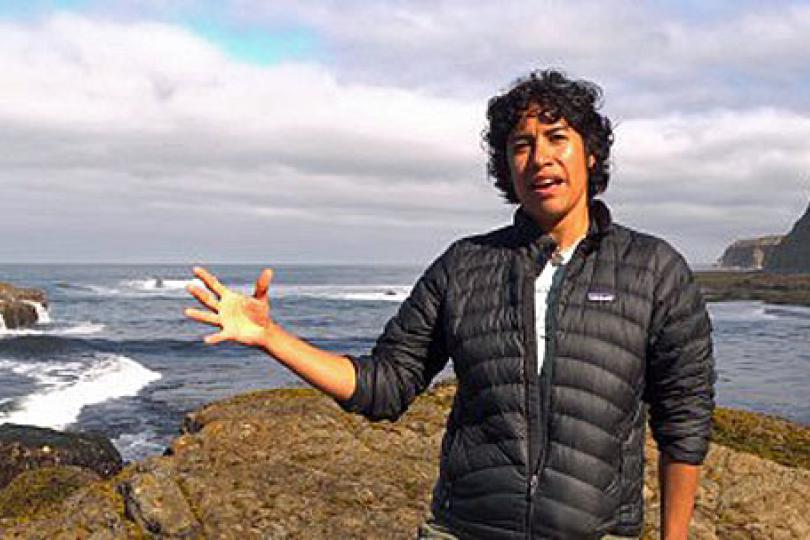Bringing field ecology online
Editor's note: The following article first appeared on the University of California's Natural Reserve System website.
If outdoor learning were a religion, Erika Zavaleta would be among its foremost acolytes. A professor of environmental studies at UC Santa Cruz, Zavaleta regularly leads ecology students into the wilds of California, immersing them in the field for weeks at a time.
So when the University of California joined the rush to develop online courses, Zavaleta was deeply skeptical about the medium’s effectiveness. Then she met a working mother who said online classes gave her a chance to complete her college degree.
“That got me thinking about the potential for online courses to broaden access to the field of conservation science,” Zavaleta says. An online ecology course, she realized, could attract students who would never consider taking a class requiring live field trips.
Ecosystems of California
Inspired, Zavaleta set out to create an online field course of her own, Ecosystems of California. With funding from UC’s Office of the President, Zavaleta is integrating online learning elements like moderated discussions and narrated slide shows with lab exercises (simple data collected by students will be combined into a class dataset for analysis) and video field trips.
She envisions a class roster that includes students who have never gone camping, don’t have money for tents and other gear, feel apprehensive about visiting wilderness areas, or can’t get away due to other responsibilities. Online courses can also accept far more students than the 30 or so who can be accommodated on an actual field trip, bringing ecology to the masses.
By bringing field biology to a broader range of people, Zavaleta hopes the course will help broaden racial, ethnic, and socioeconomic diversity in ecology and environmental studies. “I’m interested in making more ways for people to have an entry point to get interested in conservation, an internship at a reserve, or taking a class with a field component.”
Starring NRS reserves
Filming the field videos has Zavaleta ricocheting around the state with videographer and UCSC alum Zack Hill. “It’s so fun! I’m having a ball,” she says.
Each video will introduce students to a different location or habitat type. Some will describe the natural history of an ecosystem and how it’s changed over time, while others will give students glimpses of research efforts.
NRS reserves feature prominently in the curriculum. Zavaleta has live-trapped mammals with UC Santa Cruz NRS director Gage Dayton at Fort Ord Natural Reserve; recorded track pad readings of nocturnal animals with restoration steward Tim Brown at Younger Lagoon; communed with northern elephant seals on Año Nuevo Island Reserve; and examined bristlecone pine forests at White Mountain Research Center.
Other NRS reserves on Zavaleta’s itinerary are Landels-Hill Big Creek, representing coastal stream and scrub as well as marine ecosystems; and Yosemite National Park for the Sierra Nevada unit.
Ready, set, teach!
Zavaleta has brought students to most of these places while teaching the UCSC Supercourse and conducting research. But she’s finding on-camera instruction to be whole different ballgame. “I’ve realized that in person, I have a question-driven field teaching style. I don’t talk so much about everything we see. But there’s not much place for that in a video field trip.”
The permanence of video has also kept Zavaleta questioning her on-camera patter. “I find myself up late at night fact checking remarks I might not otherwise have to do for an in-person lecture; the other night I was looking up what percent tree cover is necessary for it to be a woodland versus a savanna,” she says. “I’m gaining a whole new respect for people who do TV and memorize so much and are able to talk and walk and look at the camera at the same time.”
A full filming schedule
As happy as Zavaleta is to work in stunning wild places, filming hasn’t exactly been a walk in the park. The tight travel schedule has Zavaleta and Hall sprinting from dawn to dusk to cover the topics on her syllabus.
“Zack said one afternoon, ‘let’s take a water break.’ When he looked at his pedometer app, it showed we’d already walked seven miles. I was shocked. But we had hiked up a ridge to see serpentine grassland, down the hill again to shoot some different chaparral types—it all adds up,” she says.
Then there are the times when local residents do not want their 15 minutes of fame. One of Zavaleta’s lessons covered the role of western scrub jays in oak dispersal, but none would fly within 400 meters of the camera. The lesson uses photos and a found feather instead.
A UC-wide course
Students will view the completed videos through their online course portal. But all of the 20 to 25 videos, each five to ten minutes long, also will be made available to all on YouTube.
By attracting a broader student roster, the course complements another diversity initiative Zavaleta plans to launch this fall: a program that aims to offer mentorship and leadership training to broaden diversity in conservation science.
As for the future of her course, “it’s all an experiment,” Zavaleta admits. “But I am really hopeful it will be good, new territory that we cover. ”
Ecosystems of California will be available to students from across the University this winter quarter through the UC Online cross-campus enrollment system.
